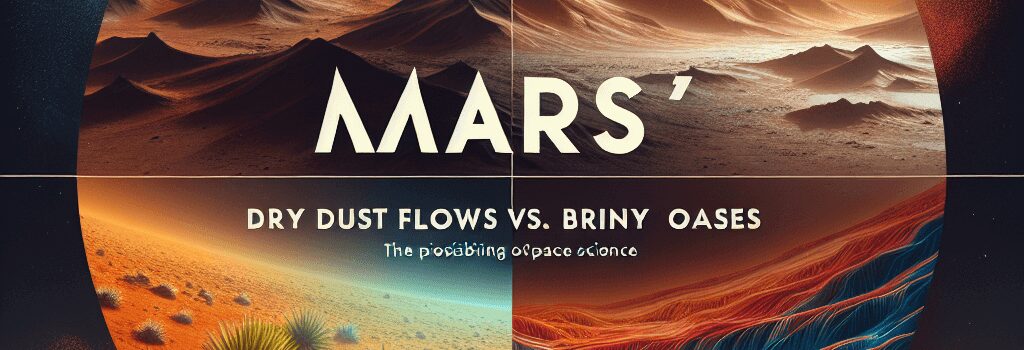Mars’ True Nature: Dry Dust Flows vs. Briny Oases

By Eric Berger – May 20, 2025
Martian Mystery Unraveled
For decades, dark and light streaks threading the slopes of Olympus Mons have tantalized scientists with the possibility of transient liquid water on Mars. Captured last October by the European Space Agency’s ExoMars Trace Gas Orbiter (TGO), these features span roughly 50 km2 of rugged, hummocky deposits called aureoles—remnants of colossal landslides from the 22 km-high volcano.
High-Resolution Imagery and Instrumentation
ExoMars Trace Gas Orbiter: CaSSIS Camera
- Spatial resolution: ~4.5 m/pixel
- Spectral range: 0.4–1.0 µm (visible to near-IR)
- Swath width: ~9 km per pass
Integration with HiRISE Data
NASA’s Mars Reconnaissance Orbiter (MRO) HiRISE instrument, offering 25 cm/pixel detail, provided ancillary topographic context. By co-registering TGO and HiRISE mosaics, researchers achieved sub-meter elevation models, isolating streak initiation zones.
Machine Learning Methodology
In a study published May 19 in Nature Communications, a team led by Dr. Alyssa Wright at Caltech deployed a convolutional neural network (CNN) to sift through 86,000 MRO images. The model—trained on synthetic dust-flow simulations and manually labeled streaks—reached 96% accuracy in distinguishing dry granular slides from potential fluid flows.
- Preprocessing: Radiometric correction and dust-veil removal
- Segmentation: U-Net architecture for streak detection
- Classification: Random forest ensemble to reject false positives
The resulting global map catalogs over 500,000 streaks, with no spectral signature of hydrated minerals or liquid brines.
Implications for Mars Habitability
These findings shift the paradigm: rather than ephemeral water oases, the streaks are likely dry dust slides triggered by seasonal CO2 sublimation or seismic shaking. While surface habitability prospects dim, subsurface ice deposits—detected by SHARAD on MRO—remain prime astrobiological targets.
Expert Opinions
“This study exemplifies how AI accelerates planetary geology,” says Dr. Jane Patel, senior scientist at JPL. “By fusing high-res imagery with advanced ML, we’ve closed a chapter on surface water, redirecting our search beneath the regolith.”
Future Research and Missions
Looking ahead, NASA’s planned Mars Ice Mapper (launch ~2028) will combine ground-penetrating radar and hyperspectral imaging to pinpoint subsurface ice with meter-scale accuracy. Concurrently, the European Space Agency’s Rosalind Franklin rover will drill to 2 m depth, seeking biosignatures in ancient aquifers.
Key Takeaways
- Dark streaks on Olympus Mons are dry granular flows, not brine outflows.
- Machine learning on 86,000+ orbital images enabled a global streak catalog.
- Subsurface ice, not surface flows, remains the best hope for extant life on Mars.